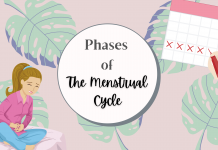Yes, this is very much related to your biology class. In this section, we are going to talk about the methods of contraception every sexually active person should know about (Roll credits!). For that, first, we need to know what contraception is, and then we shall talk about how it is done. For more check here.
What is contraception anyway?
Avoiding pregnancy as a consequence of sexual intercourse is called contraception. In other words, it means deliberately preventing a person from getting impregnated.
It can be done by the use of various drugs, techniques, and devices called contraceptives.
What is a contraceptive?
Any drugs or devices used to prevent pregnancy as a result of sexual intercourse are known as contraceptives.
They are divided into different categories:-
Natural
Barrier
IUD
Oral contraceptives
Surgical Method
Different methods of contraception
Natural Method
These methods, as the name suggests, do not involve the use of any type of devices or drugs.
They are based on the principle of avoiding the chances of having the sperm meet the ovum.
Pros: As no medication or devices are used in these methods, the chances of side effects are as good as none.
Cons: The chances of failure are very high in all of the methods mentioned below and there is no protection against STIs.

Periodic Abstinence is a type of a natural method of contraception. In this method, couples refrain from sexual intercourse from day 10 to day 17 (also knows as ‘fertile period’) of the menstrual cycle. In other words, they avoid sex when ovulation is expected to take place.
Drawback: This method is not very reliable as different women have different menstrual cycles.
Withdrawal of ‘Pulling out’ is another natural method of contraception in which the male partner withdraws his penis from the vagina right before ejaculation (cumming) which avoids insemination (entry of sperm in the genital tract of the female).
Drawback: It requires accuracy and may fail due to human error.
Lactational Amenorrhea is a method based on the principle that ovulation and thus the menstrual cycle itself does not occur when the mother is lactating. This method is effective only up to a maximum period of 6 months following childbirth
2. Barrier Method
As the name suggests, this method of contraception abides by the principle of not letting the ovum (egg) meet the sperm by forming a physical barrier between them. A barrier can be made by using the following contraceptive devices.

Condoms (aka ‘protection’):
They are contraceptive devices/barriers. Though are made of a thin layer of latex sheath.
They are either worn over the penis or inserted in the vagina to prevent the entry of sperm into the female genital tract thus avoiding conception. In fact, it is always advisable to use a condom when having casual sex.
Pros: It is easily available, cost-efficient, and user-friendly. Since it helps avoid skin to skin contact as well as the exchange of body fluids, it also helps prevent the transmission of STIs. They do not have
Diaphragms, Vaults, and cervical caps are also available. They are also made of rubber. They cover the cervix during coitus.
3. IUD (Intra-Uterine Devices)
IUDs are devices that work on the principle of preventing the implantation of the fertilized egg into the uterus. They are only inserted by medical professionals like doctors and nurses. They may or may not contain hormones. Even effective for those couples who want to space their children by a few years.
4. Oral contraceptives
Oral contraceptives are basically what we call “pills”. They are medications taken orally in the form of tablets or pills.
They are usually taken daily for a period of 21 days starting within days 1 to 5 of your menstrual cycle and in the same pattern is repeated after a gap of 7 days as long as contraception is desired. One should consult a medical professional before opting for this method.
Another type of oral contraceptive is the ‘morning-after pill’. These can be taken up to 72 hours after unprotected sex to avoid conception.
Oral contraceptives are widely accepted as they do not have many side effects. However, they do not provide protection against STIs.

5. Surgical Method
These methods of contraception are basically procedures that ‘sterilize’ the person undergoing the procedure. These procedures are done by medical professionals ONLY. They are usually irreversible so one should always make a well-thought decision to go for it.
Tubectomy is a procedure in which the fallopian tubes of the female are ligated.
Vasectomy is a procedure in which the vas deferens of the male are ligated.
However, one should keep in mind that a suitable contraceptive should be selected based on the advice of a qualified medical professional (except condoms) as some of these methods may cause side effects such as bleeding, nausea, vomit, amenorrhea (absence of menstruation), etc.
We discussed Methods of contraception every sexually active person should know about. It is related to your health.




